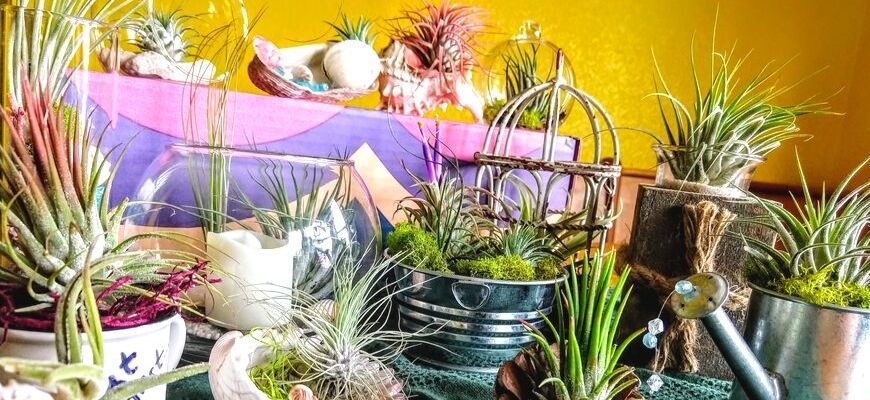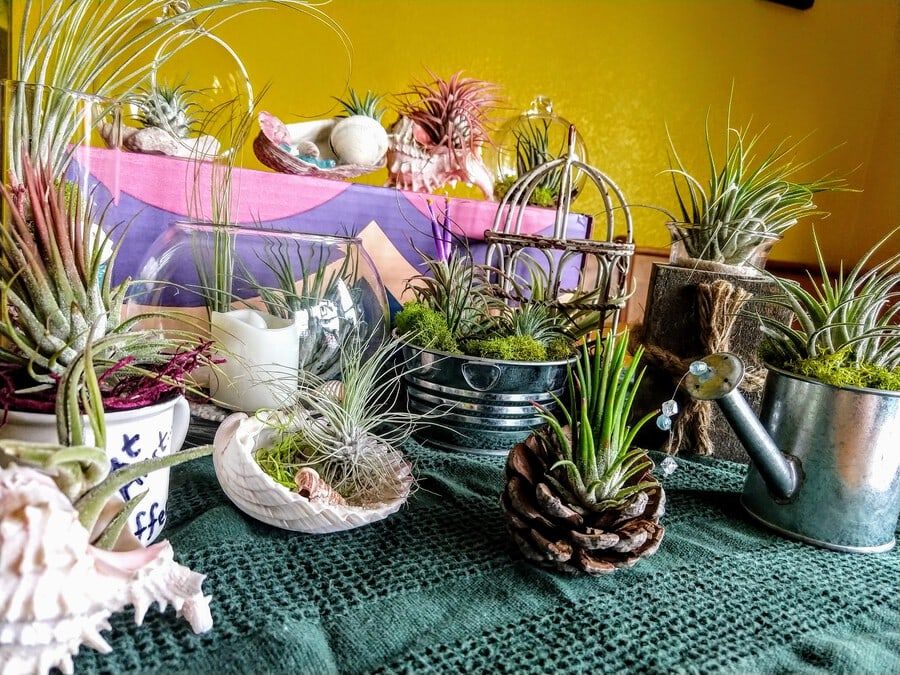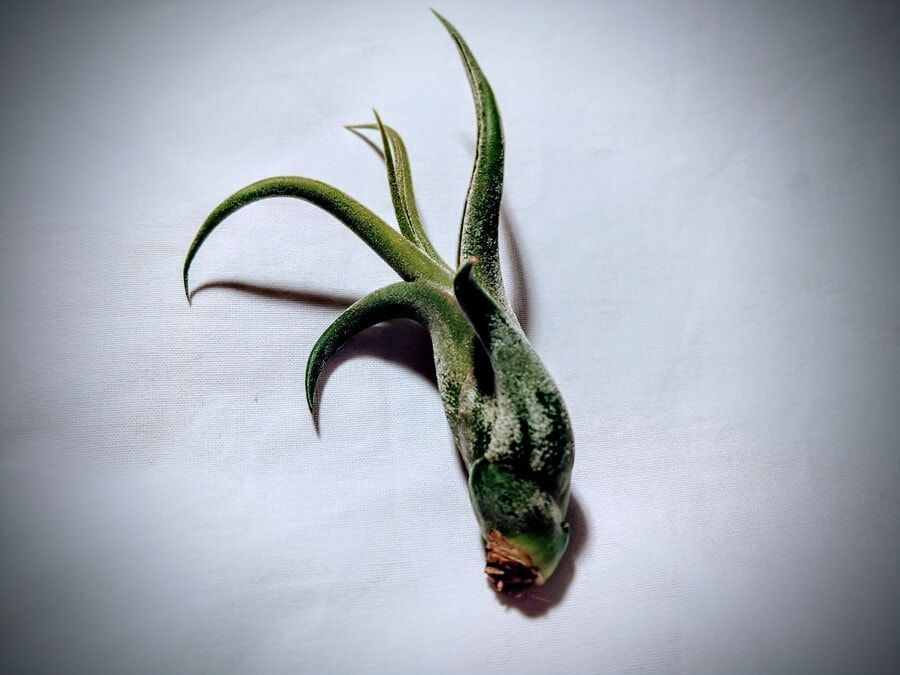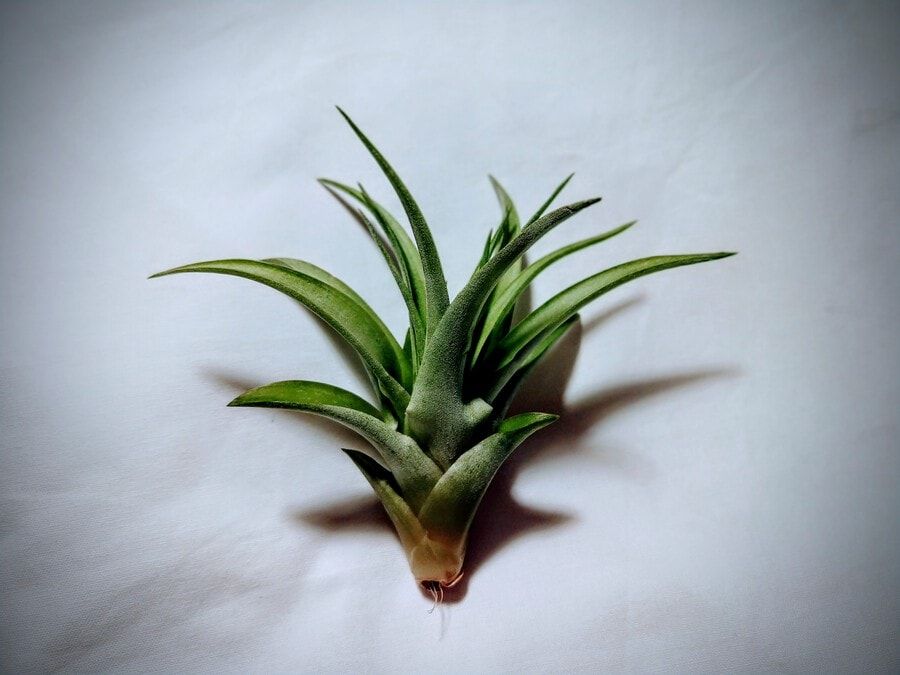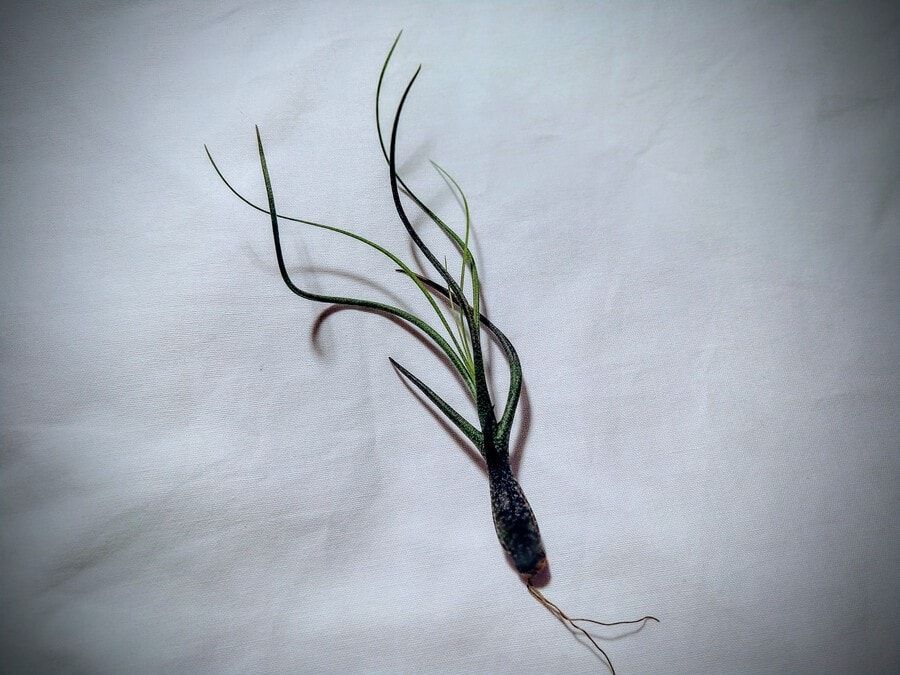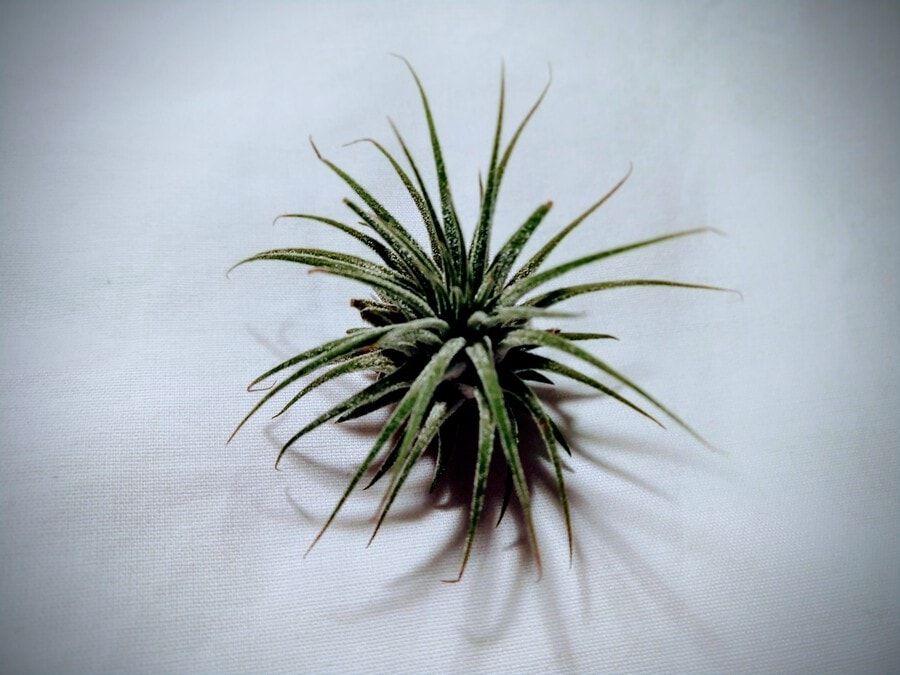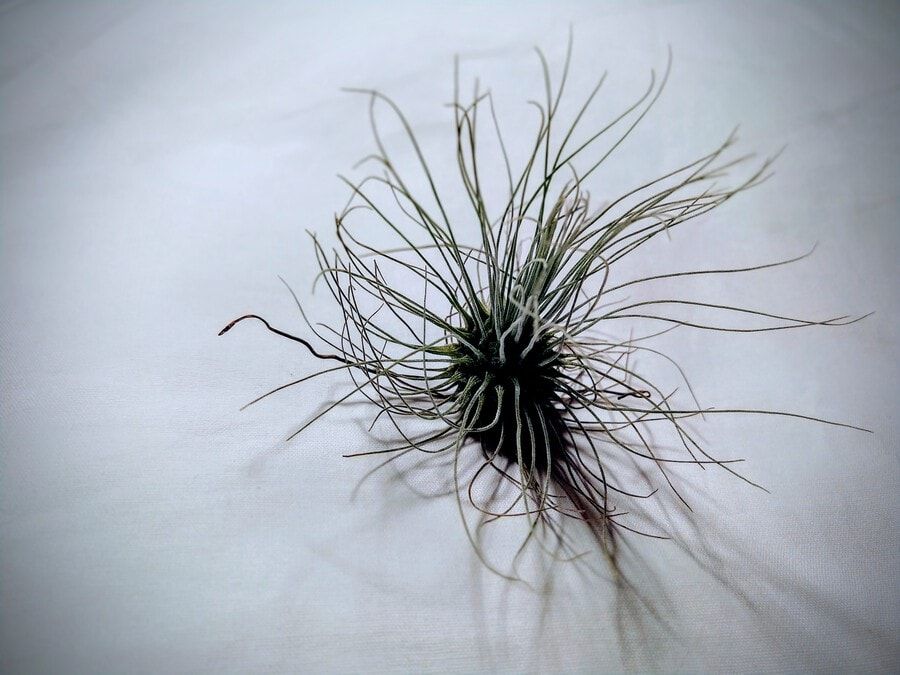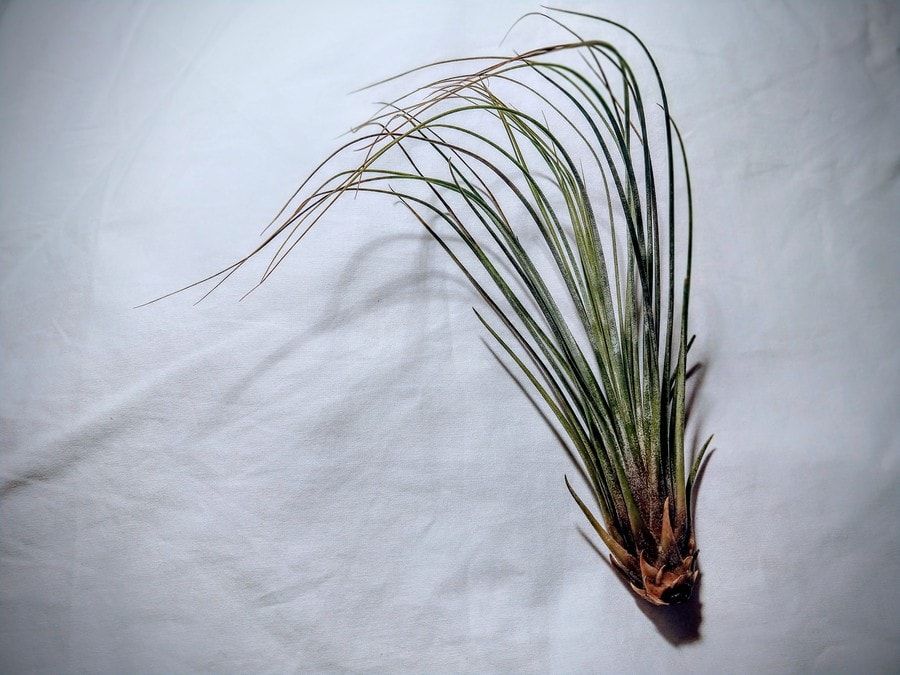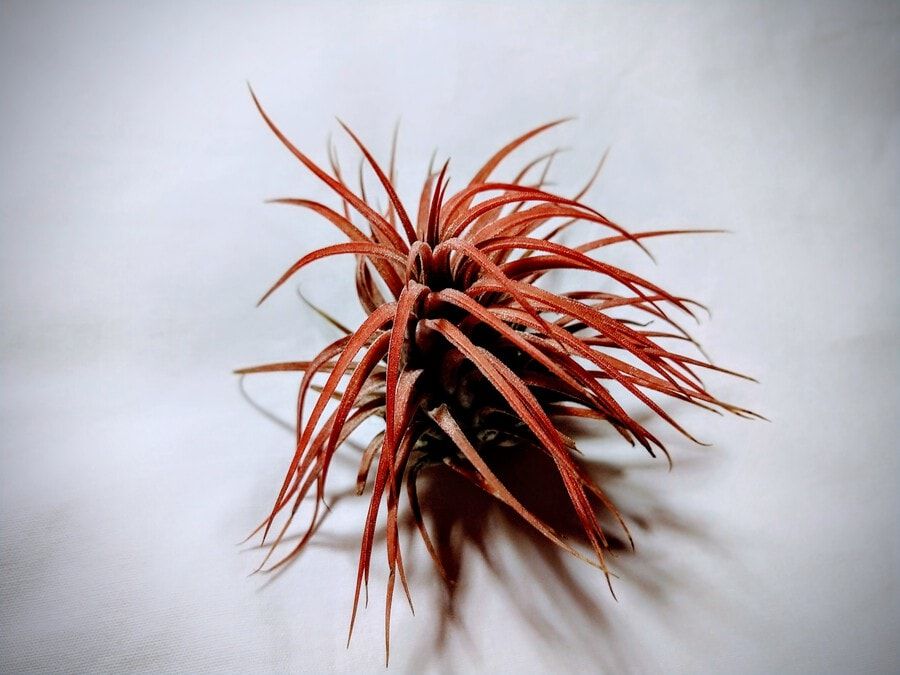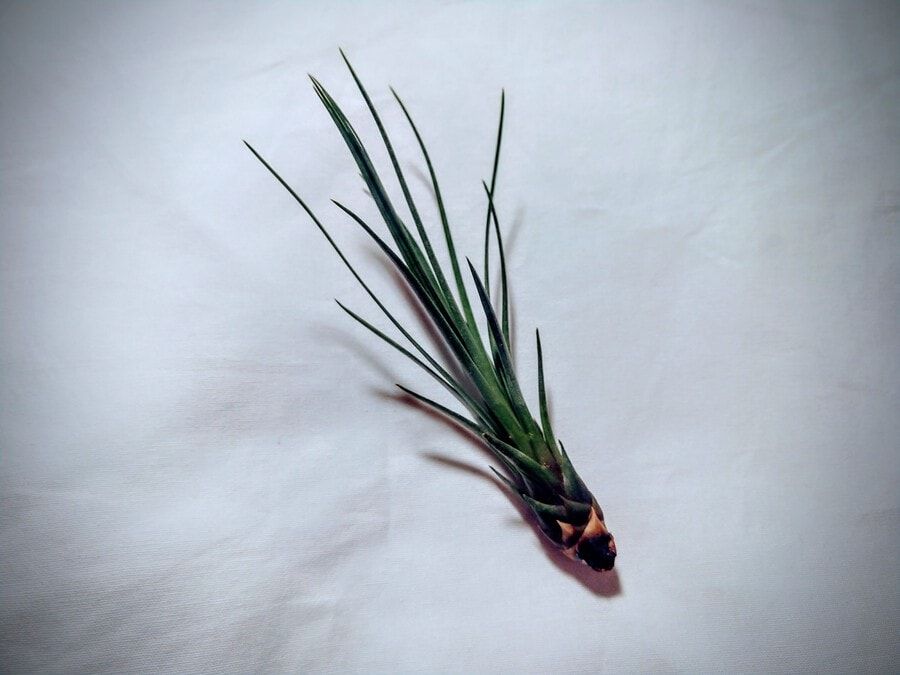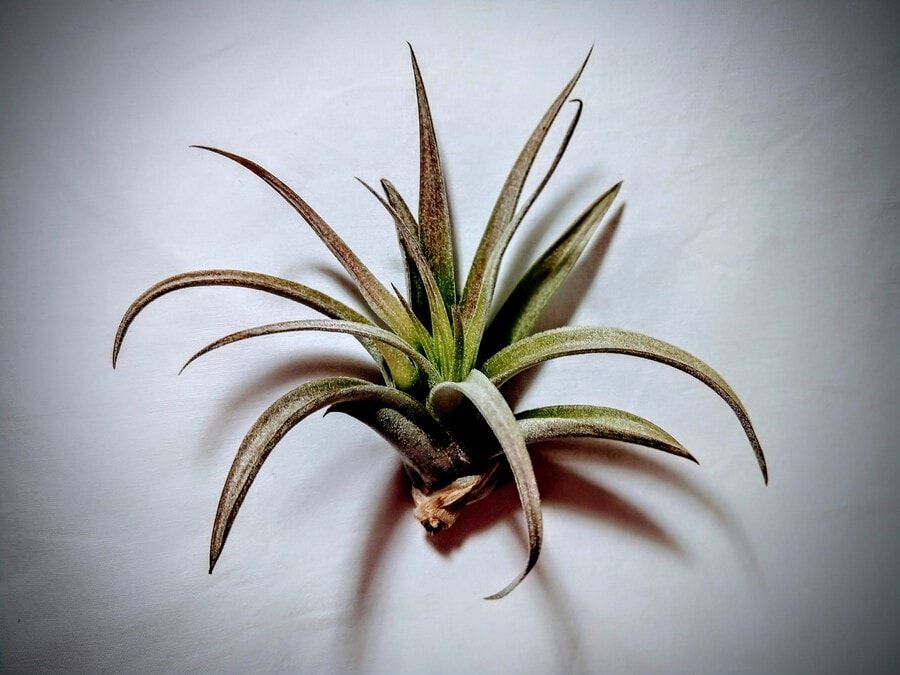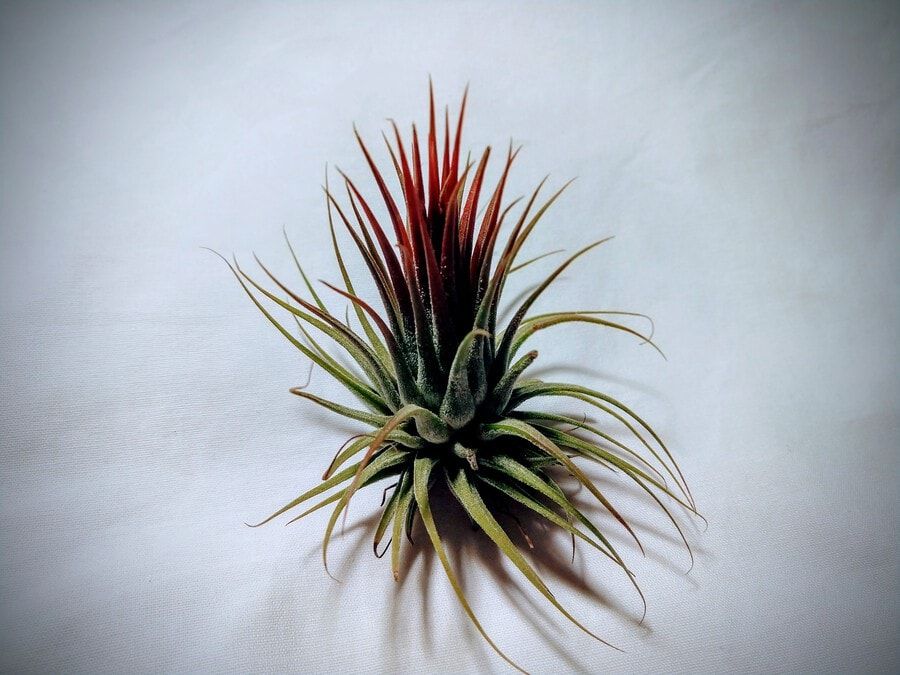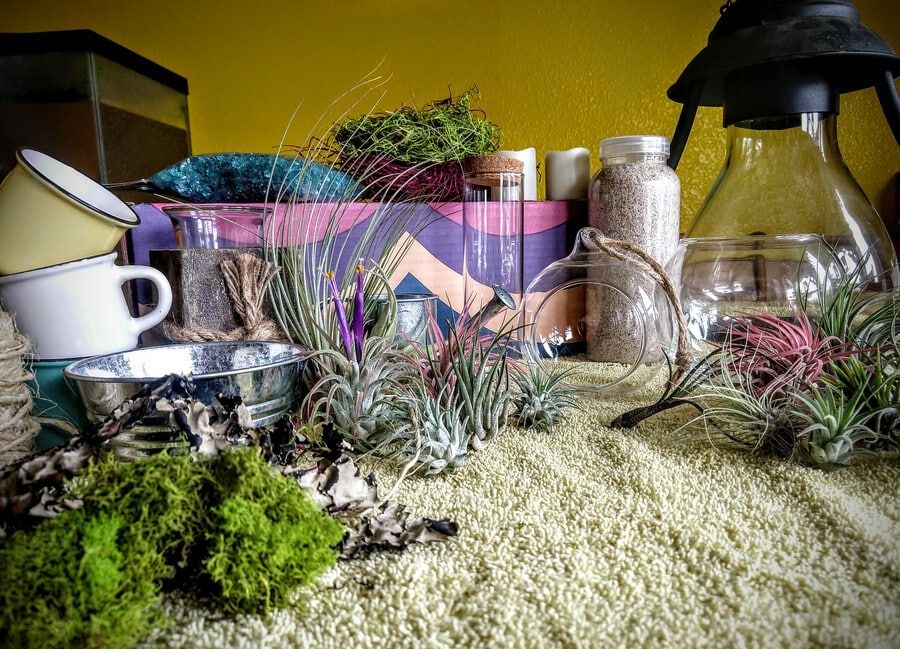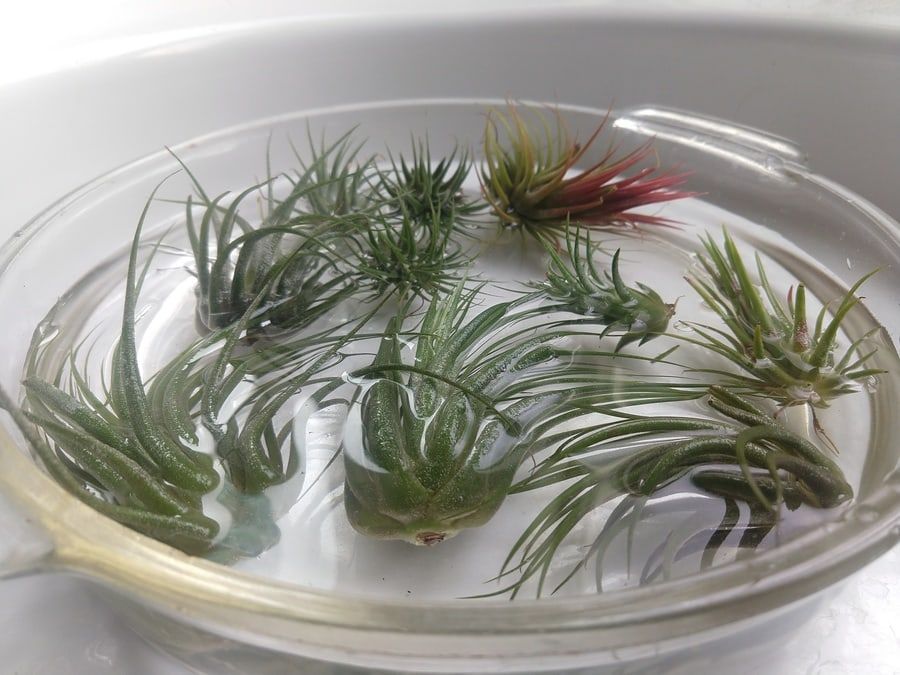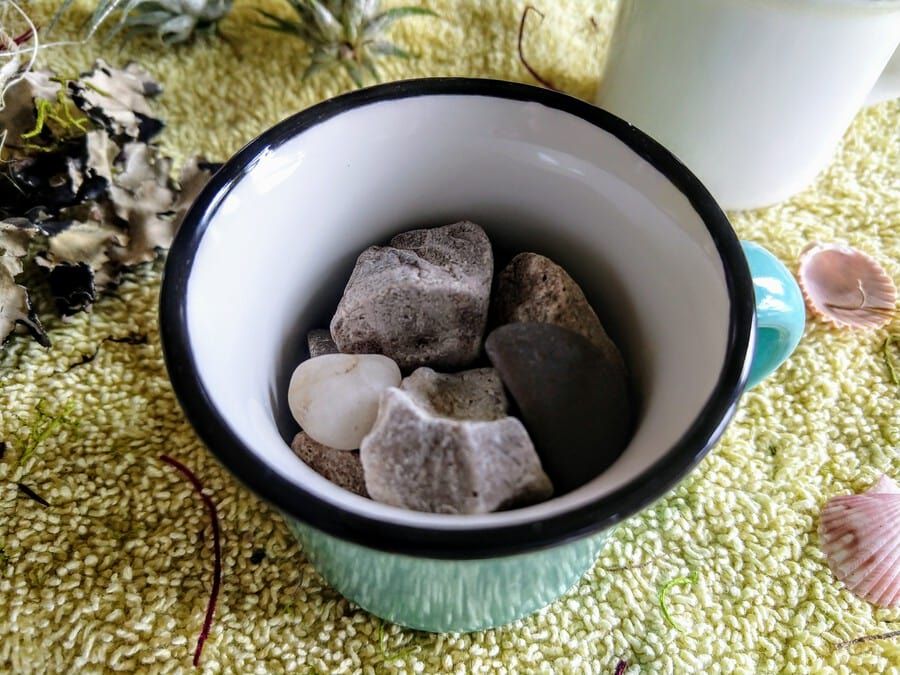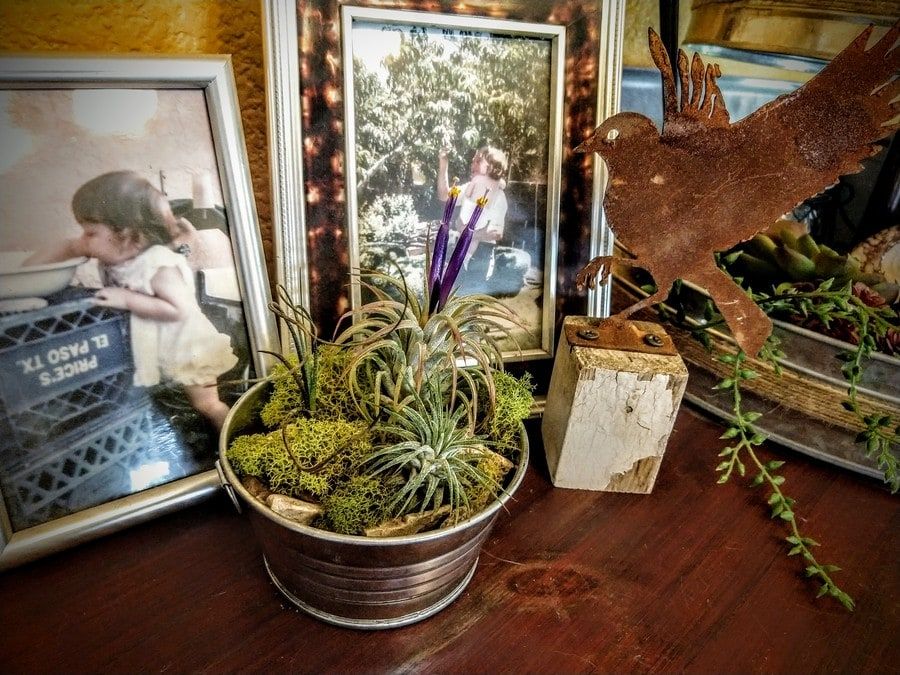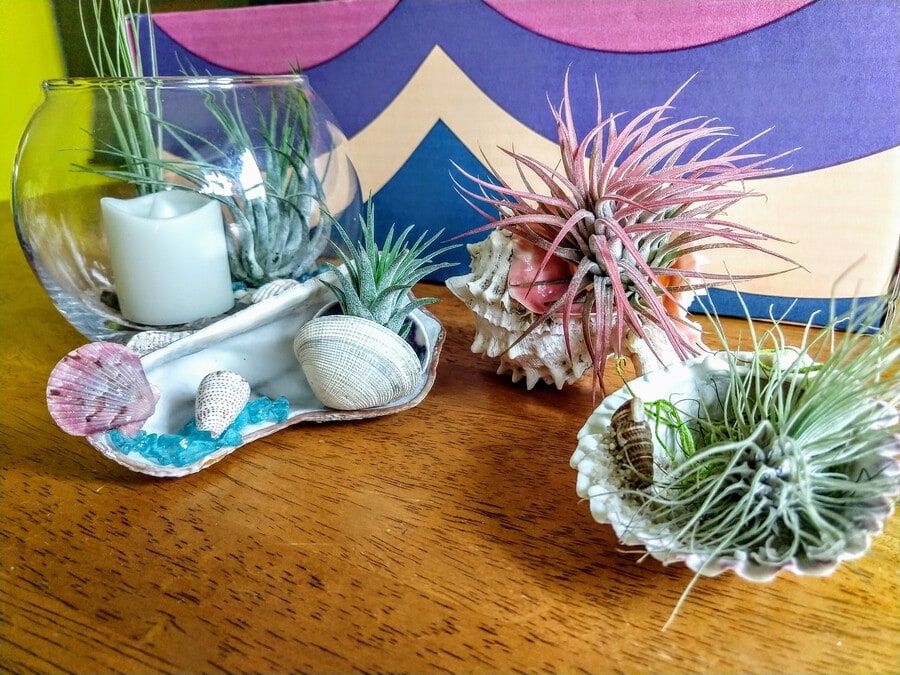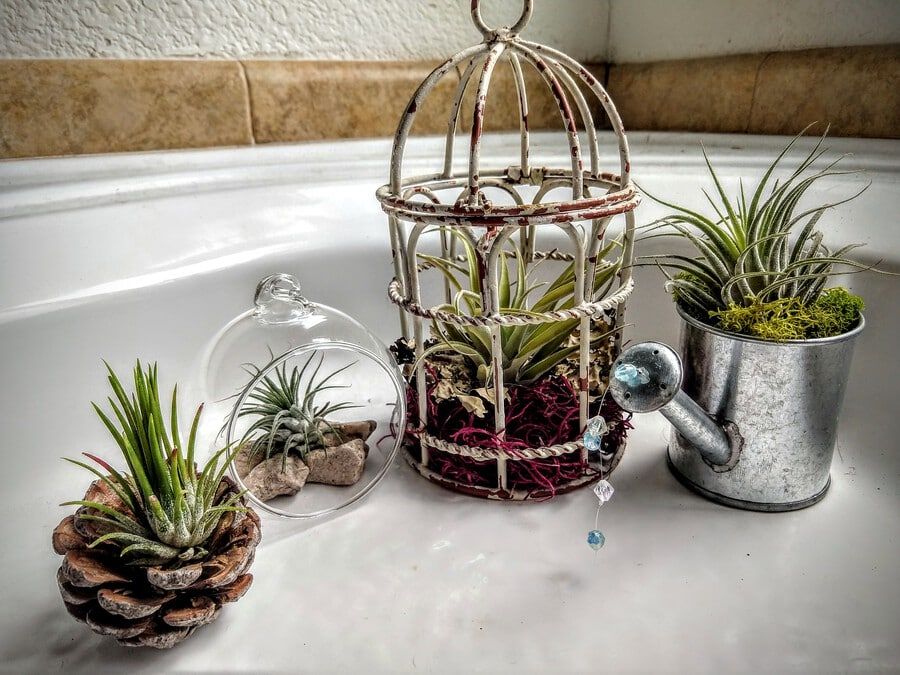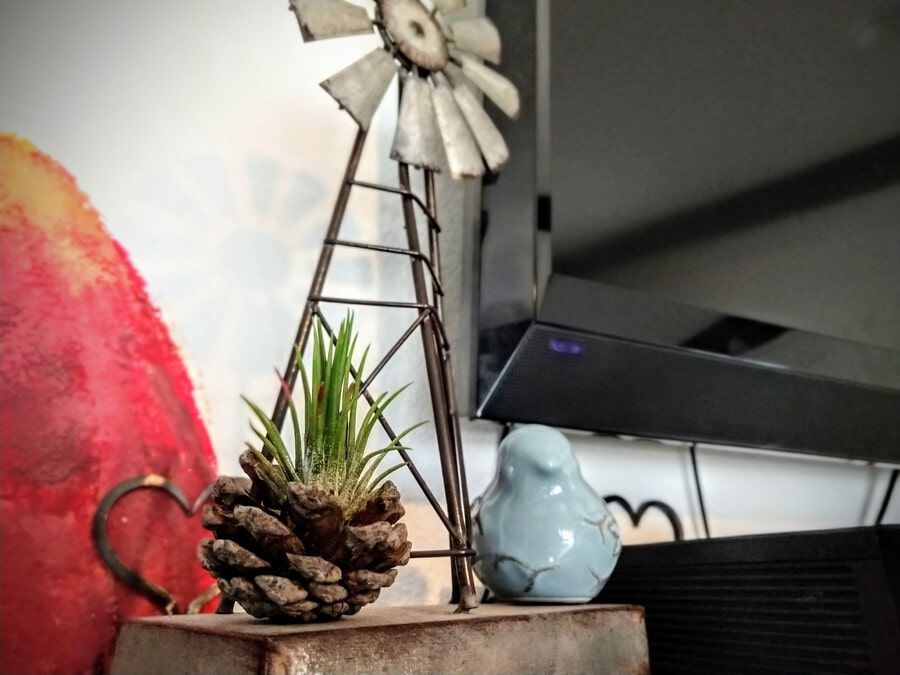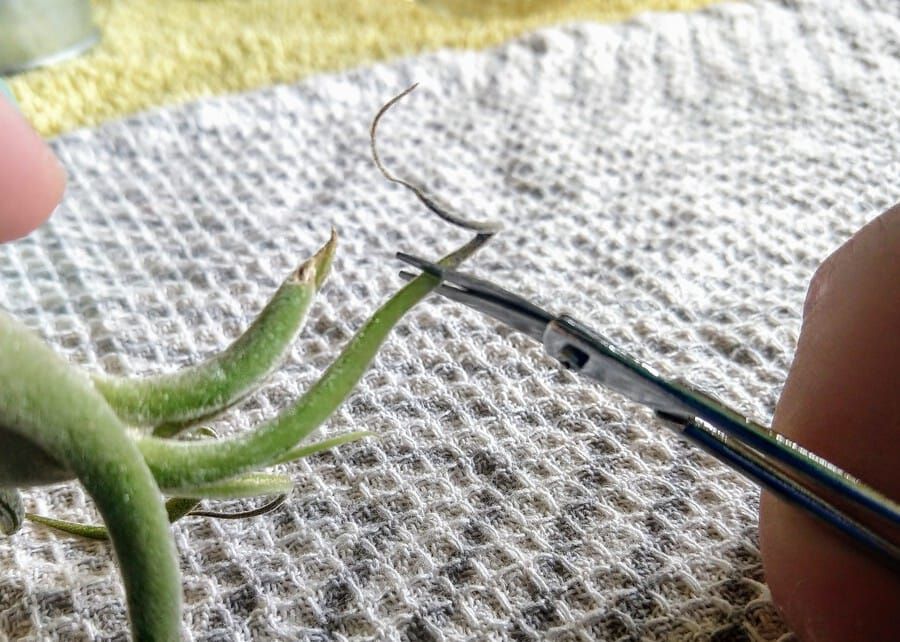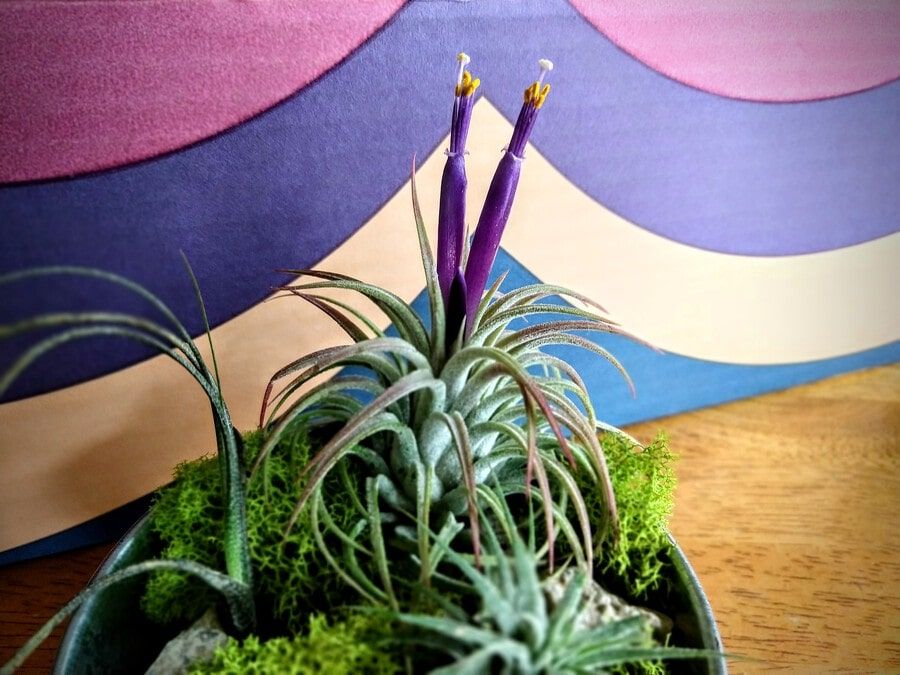You don’t have to have a green thumb in order to add decorative vegetation to your home and office decor. In fact, you can grow and display a wide variety of plants quite easily, and with very little effort. Air plants are those species of plants that are found throughout tropical regions that find their home in the cracks and crevices of trees, rocks, and other, taking up very little water and nutrients throughout their lifespan.
The simplicity of their needs makes them easy to display in your choice of space. Allowing them to be used in centerpieces, hung in windows and on walls, or simply placed in your favorite throughout the home that need a little greenery. This guide explains all you need to know to care for your air plants, keep them alive, and even propagate them for long lasting life and color.
Air Plants: What They Are and How to Choose a Favorite
Air plants are not a technical name and actually is used to describe a wide range of the epiphyte species of plants that co-exist along with other plants. They are able to grow without a vast root system and belong to the genus Tillandsias, which describes a wide range of various subgenera, many of which you can choose from for your home.
Native to the America’s, they are considered a tropical plant that require temperatures above 65 degrees in order to thrive. They derive their nutrients and water from their surroundings, such as the moisture in the air, or the dust and debris that may settle against them. This makes them incredibly easy to grow and propagate with the bare minimum of attention and knowledge of what to look for.
Species
What’s even more great about these plants, is that there is a wide variety of species from which you can choose from. Color, texture, flowers, and size are all options you can pick and choose from to display singly, or in multiple, displays.
Some species are more hardy than others, and can tolerate variances in lighting and humidity. Look for those species that will work best in your home climate. Some of the most popular choices include:
Head of Medusa (Tillandsia caput-medusae)
Horizontally growing, snake-like leaves define this plant, which blooms red or blue flowers in early summer.
Spanish Moss (Tillandsia usneoides)
Fragrant and soft looking, Spanish moss is a great choice for a draping effect. Fast growing, it is simple to care for.
Tillandsia aeranthos
The long spiky leaves of this plant love bright, indirect sunlight which will reward you with vibrant blue and pink flowers. It can grow to 9 inches in height!
Tillandsia bulbosa
A lover of humidity, this bulb like looking plant sends out wavy tendrils in all directions.
Sky Plant (Tillandsia ionantha)
This bromalid is short stemmed and has spiky leaves. Towards the end of its life it will bloom bright, long lasting, vibrant flowers. See the Fuego sub-species picture below!
Tillandsia andreana
Thin, grass-like leaves shoot out in all directions from this plant that can be up to 4 inches in diameter. Tube like flowers will bloom from the center.
Tillandsia xerographica
The spherical shape of this plant has wide leaves and slowly produces spikes that turn into red or yellow flowers.
Tillandsia Juncea
Tall and grass-like, this is a favorite for tall displays.
Tillandsia maxima
This vibrant choice slowly turns a coral color before bursting into multiple brilliant purple flowers centered by a yellow center.
Pink Quill Plant (Tillandsia cyanea)
With the ability to grow in soil, this plant produces a bluish pink flower that looks like a feather quill.
Tillandsia capitata peach
The lime green leaves of this plant love humidity and full sun, and when preparing to bloom turn a vibrant peach color.
Tillandsia funckiana
The long, spiky leaves of this species all grow in the same direction and can curl based on where they are grown. Leaves turn a bright yellow before it blooms into a bright orange flower.
Fuego (Tillandsia ionantha)
These are tiny options that only grow to about an inch in height, but have vibrant green, orange, and reddish leaves.
Tillandsia stricta
Super hardy, these plants can grow in a variety of climates and produce vibrant flowers of various colors. The pink bronze and midnight varieties are incredibly popular.
Tillandsia chiapensis
This is another hardy choice that can tolerate full sun and many different growing conditions. Wide greenish leaves curl up and over with pink and red blooms growing from the center of the 5 inch ball it forms.
Where to Find Air Plants
May times your local garden center may carry air plants along with their succulent and indoor house collection. Depending on who their supplier is you may, or may not, have a decent selection to choose from. Be wary, however, of those plants already placed in decorative displays because oftentimes they are glued into place, negating any care you could provide them. If the plant is healthy and you are able to lift it free, you can definitely keep it alive and growing!
When buying in store, look for a loose, green plant. Overdrying will create brown tips or splotches on the leaves. Sometimes lower leaves will look a little banged up or brown due to shipping and handling, but these can often be removed gently if the rest of the plant looks good. If plants are in full bloom, you may want to check on the species to see if it will die shortly after it spends it flower. But, you also may score a cluster of ‘pups’ at the base of the plant either way (more on that below).
I suggest you look online for air plant enthusiasts such as AirPlantDirect or Black River Air Plant Company who are selling their mother plant progeny or dependable nursery distributors like Aura Creations (plants from these shops are seen in the pictures provide). Both commonly offer individual and mixed packs of plants of various sizes for you to choose from at fair prices. This way you also know you are getting a live, healthy plant shipped to you in a timely manner from an environment that does not include dusty store shelves. Always be sure to contact the seller if your shipment arrives in less than perfect condition since so many factors can affect the shipping of live plants no matter how much care is taken to protect them.
Finding Displays
Although those pretty display offered in the stores may be tempting, don’t go crazy buying them up unless you know you can care for your plant properly as described above. You can easily score your own display options in craft stores and online. Hanging glass bulbs, vases, plant stands, wall hangers, wood displays, etc are all readily available and provide fun and whimsical ways to show off your vegetation.
Air plants look great with colored rocks, sand, dried mosses, shells, or other display pieces so you can create your own dry landscapes for decorative touches throughout your home. I had a blast looking for small decorative pieces I could use with my plants, and getting creative with how I could make fun gifting projects for my kids to work on!
Air Plant Care
Air plants are incredibly easy to care for, but just like any living thing, you can’t just place them on display and forget about them. They can, and will, die if totally neglected- especially if you have a climate that deviates from its natural habitat. Otherwise, you don’t have to spend a lot of time with their overall health, which is time you can spend displaying them in various places throughout your home.
When They First Arrive Home
Whether you purchased the plants in a store or ordered online, you should always hydrate your vegetation to provide them the best start possible. Give them a good ‘soak’ for at least 15 minutes in a shallow bowl of water, and then remove and shake them out to remove any trapped water from between the leaves. Let them dry upside down before ‘planting’ them in various locations.
Sometimes you may see smaller, bottom leaves dried up and shriveled upon arrival. This is very normal, and you can gently remove these leaves if you see this. It will not hurt to leave them intact either.
How to ‘Plant’ Them
Air plants are called such because you don’t have to plant them. In fact, you shouldn’t plant them since the moisture in the soil will create rot at the base of the plants. Air plants should be simply placed in displays such as wire vases, glass globes, wooden shelves, hanging bowls and weavings, or set on top or in your favorite existing centerpieces.
You might want to provide a rough surface, such as sand or rocks, for them to cling to if they put any roots out. Although their roots are not for nutrient or water uptake, they do help provide stability. Plus, it provides you a good substrate to balance them in so they don’t tip over easily.
Where to Place Them
Most air plants cannot tolerate full sun, and naturally propagate in shady areas with intermittent, indirect sunlight. Some species change color with sunlight, and others are completely tolerant of it- so always be aware of your specific species needs for best color and growth. They are fun to place just about anywhere around your house for a pop of color and texture!
Rule of thumb: keep it protected from direct light, and be sure to keep it properly hydrated. Since most people place their plants indoors, this is not often a problem. They often LOVE bathrooms due to the humidity that is regularly provided.
Temperature Needs
Don’t allow your plant to get colder than 45 degrees Fahrenheit as it will die. The cooler it is, the slower its growth and flowering as it becomes dormant and retains what nutrients it has. Remember, these are tropical species and they love the heat. You plants will be happy and reward you with flowers if they are kept at or above 64 degrees Fahrenheit, which designates an average tropical climate temperature.
How to Water Them
Watering is very dependent on your own climate’s humidity, and care should be taken with your watering more so than any other detail; too much water will result in your plant’s death. In general, you will want to soak your plants in a shallow dish for about 20 - 30 minutes every other week during the growing season. You can also lightly mist (don’t allow water droplets to form and run down the leaves) about twice a week. You can always adjust this if you feel your plant is beginning to dry out.
Try to use rain water, bottled water, or if you have it, well water (if it isn’t considered too hard)- all which are infused with naturally occurring minerals. Tap water is okay, but if you have a water softener, this isn’t going to be the best thing in the long run since it’s high in salts. Hard water chalk will clog up plant pores over time as well, so if you think your water might be hard, soak your plants every now and then in bottled water to help rinse them off.
Soaking and misting with water is about all you have to do, but if you live in an especially dry climate, you may need to take just a little bit more care with your plants:
Dry Climates
If you live where it is dry (like me in the arid Southwest) you need to spend just a little bit more time with your plants than if you were in an area that receives regular rainfall. About every two weeks you can soak your plants in a shallow dish of water for up to two hours, allowing them to dry before placing them back in their respective displays. This practice can vary based on your own preferences. For example, soak once a week for 30 minutes instead.
You also should lightly mist your plants (don’t allow water droplets to form and run down the leaves) every 2 to 3 days. If you have them housed where water will not as easily evaporate, such as in a glass globe, you do not have to provide as much watering attention as the humidity in that space will be higher.
How to Feed Them
Some sellers will send along a diluted fertilization you can use with your plants, but that will eventually run out, so it is important to know how to feed your plants. First off, air plants use a water soluble fertilizer- one that is specific to the tillandsia species. You need to follow the directions provided with the fertilizer you buy as they may vary in how they are diluted and used in your watering techniques. Some may require to be used every time you soak your plants, while others may only need to be used once or twice a year.
General Care Tips
All of the above should keep your plants alive and growing as they should, but watch for a few of the following indication that may tell you to adjust your care:
- Are your leaves curling inwards and they don’t usually look that way? Your plant may be thirsty. Increase how often you soak your plant, or mist more often.
- The roots they grow are for anchoring only and are not necessary to maintain. They can be trimmed with clean, sharp scissors if you wish.
- Are the tips of the leaves turning brown? They may have too much direct sunlight or are not getting enough water. Clip those brown tips with clean scissors, and then move and/or change your watering schedule.
How to Propagate Them
Many of the plants become most colorful shortly before bloom, which also may herald in its maturity, depending on the species. Those that mature upon blooming will continue to age and die shortly after its long lasting bloom passes. But this doesn't mean your plant is ready to say goodbye; in fact, the blooms are an indication of its imminent survival through the production of genetic ‘babies’ or ‘pups’ that will grow from the plant’s base.
Even if your plant doesn’t die after a bloom, you will begin to see its progeny growing from the base. You can do one of two things one the new growth is ⅓ to ½ the size of the mother plant: either leave them to continue to grow, even after the ‘mother’ plant dies, which leaves behind a cluster of plants; or you can carefully snap-off, or cut-off, the babies. Be sure that you are gentle to avoid damaging the young growth, and if cutting, error on the side of cutting into the mother rather than the baby.
Reviving Air Plants
Sometimes your plants may need a little bit of extra care due to rough shipping, extreme dryness, or stress caused by changing climates. Although air plants are pretty easy to keep alive, too much water, or a lack of water, are common culprits of noticeably ailing plants. And when you move your plants around, or are trying to find the perfect balance of moisture, your little guys may start to show signs of stress. Luckily, with a bit of care you can generally revive your plants.
Submerge your plants with a good soaking in a bright room for 12 hours before allowing to dry. Once dried, trim away any dead tips and watch for leaf curling in 2 to 3 days. If leaves are curling, repeat the process from the beginning with a good soak.
Conclusion
Air plants are a great way to introduce a little bit of greenery to your living spaces, without creating too much effort or worry about care. These plants are colorful and texturally interesting, and can be placed just about anywhere you can imagine to brighten up a room or office.
This guide should provide all you need to know for the growth and cultivation of these fun little plants. Everything from where to find healthy specifiments, to how to propagate their ‘pups’ is something you can easily do.
If you have any questions or comments, please let us know below. Plus, if you have any care tips that work great for your plants in your comments, we’d love to hear about it! And, as always, please share!

